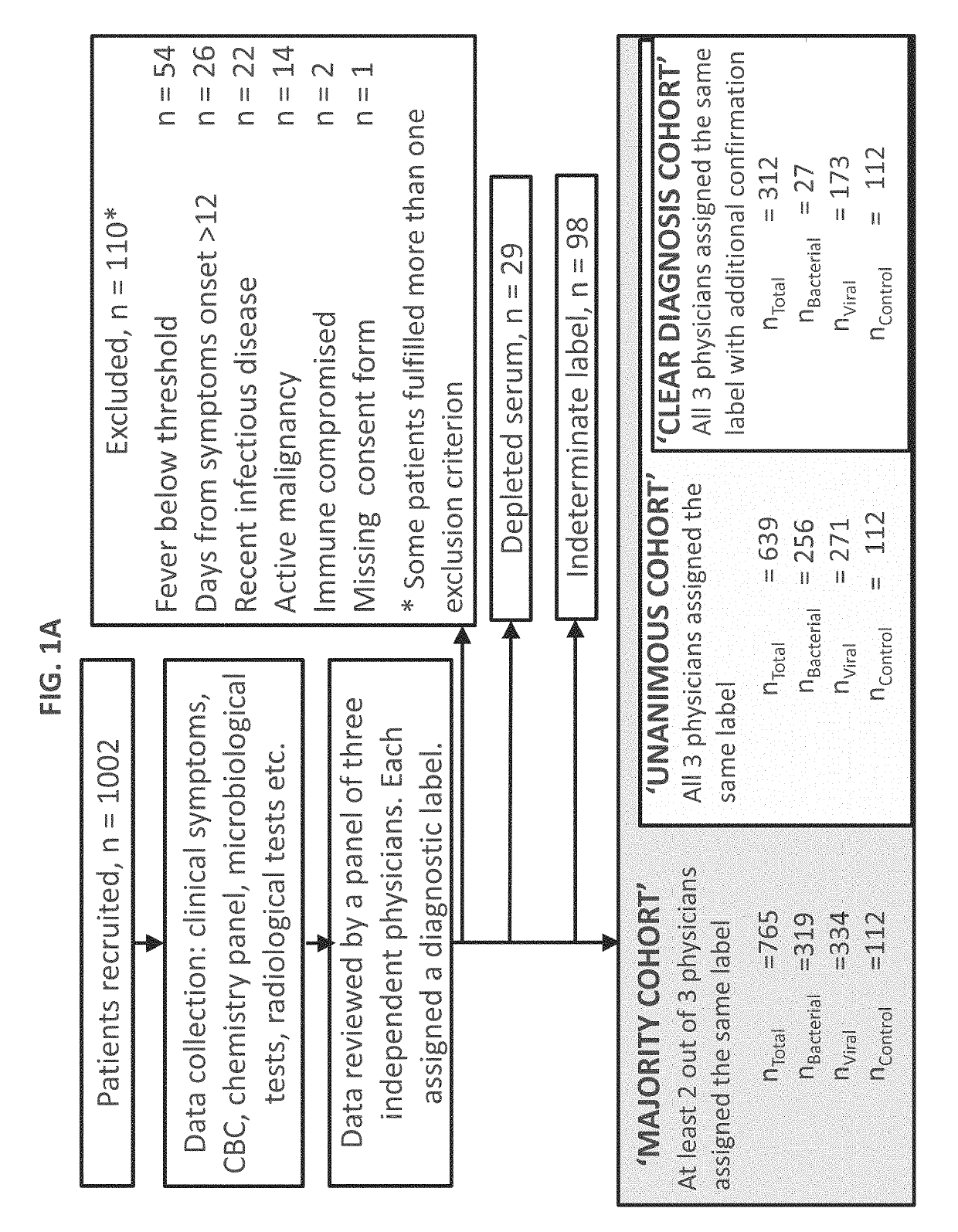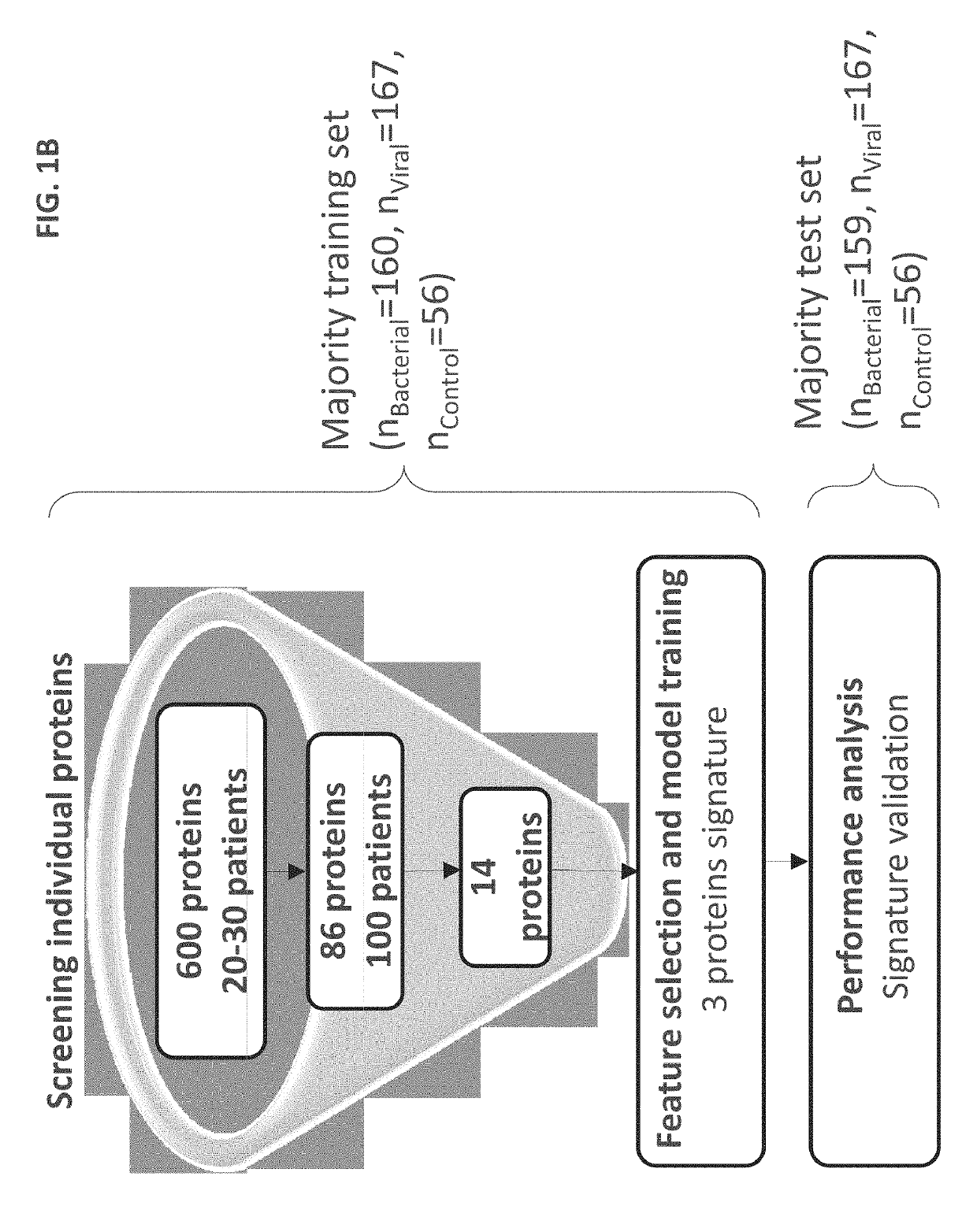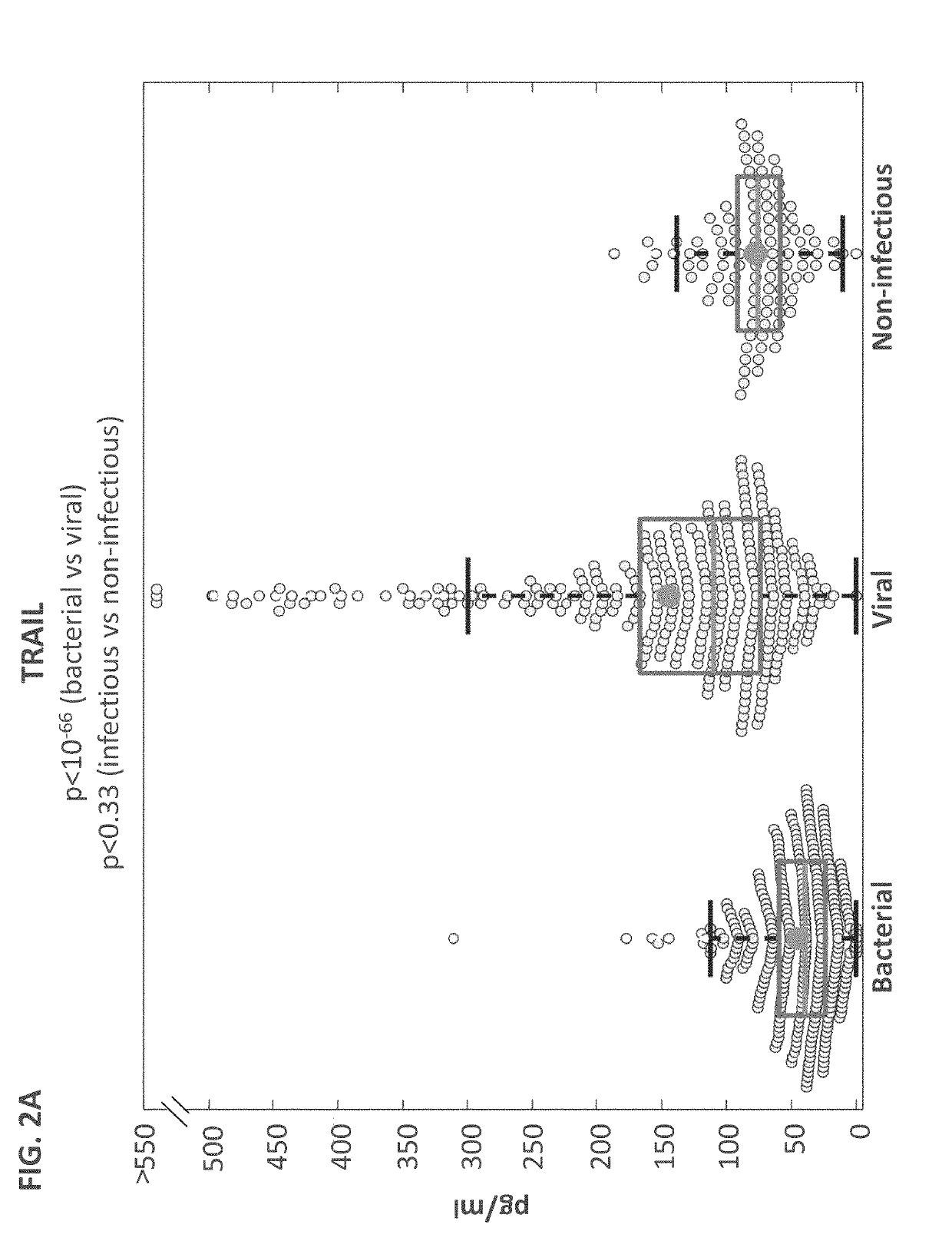Computational analysis of biological data using manifold and a hyperplane
a biological data and hyperplane technology, applied in the field of computational analysis, can solve the problems of ineffective abx, prolonged hospitalization, reducing the quality of healthcare, etc., and achieve the effect of accurately distinguishing between bacteria
- Summary
- Abstract
- Description
- Claims
- Application Information
AI Technical Summary
Problems solved by technology
Method used
Image
Examples
example 1
A Host-Proteome Signature for Distinguishing Between Bacterial and Viral Infections: A Prospective Multi-center Observational Study
[0420]Methods
[0421]Study population: A total of 1002 patients took part in the study. Pediatric patients (≤18 years) were recruited from pediatric emergency departments (PED), pediatric wards and surgical departments, and adults (>18 years) from emergency departments (ED), internal medicine departments and surgical departments. Informed consent was obtained from each participant or legal guardian, as applicable. Inclusion criteria for the infectious disease cohort included: clinical suspicion of an acute infectious disease, peak fever >37.5° C. since symptoms onset, and duration of symptoms ≤12 days. Inclusion criteria for the control group included: clinical impression of a non-infectious disease (e.g. trauma, stroke and myocardial infarction), or healthy subjects. Exclusion criteria included: evidence of any episode of acute infectious disease in the t...
example 2
A Host-Proteome Signature for Distinguishing Between Bacterial and Viral Infections: A Prospective Multi-Center Observational Study—Supplementary Material
[0452]Measures of accuracy: The signature integrates the levels of three protein biomarkers measured in a subject, and computes a numerical score that reflects the probability of a bacterial vs. viral infection. To quantify the diagnostic accuracy of the signature a cutoff on the score was used and the following measures were applied: Sensitivity, specificity, positive predictive value (PPV), negative predictive value (NPV), total accuracy, positive likelihood ratio (LR+), negative likelihood ratio (LR−), and diagnostic odds ratio (DOR). These measures are defined as follows:
[0453]Sensitivity=TPTP+FNSpecificity=TNTN+FPtotalaccuracy=TP+TNTP+FN+TN+FPPPV=TPTP+FP=sensitivity·prevalencesensitivity·prevalence+(1-specificity)·(1-prevalence)NPV=TNTN+FN=specificity·(1-prevalence)specificity·(1-prevalence)+(1-sensitivity)·(prevalence)...
example 3
Trinary Classifier Outperforms a Binary Classifier
[0499]In the binary model the classifier is trained by classifying all samples as either ‘Bacterial’ or ‘Non-bacterial’ (‘Viral’ and ‘Non-infectious’ are grouped). In the trinary model, the classifier learns to distinguish between three classes ‘Bacterial’, ‘Viral’ and ‘Non-infectious’. The probability of the viral and the non-infectious are then grouped together to give the probability of ‘non-bacterial’. This was demonstrated on the present data.
[0500]Both of the above classifiers were evaluated using a leave 10%-out cross-validation on both the Majority and Unanimous cohorts.
[0501]Results
[0502]Running the binary classifier on the majority cohort yields the results as summarized in Table 10C, herein below:
[0503]
TABLE 10CReference classViral andnon-Bacterialinfectious(B)(V + NI)63411V + NI25635B
[0504]The sensitivity of the classifier on the Majority cohort is 80.3% and the specificity is 92.2%.
[0505]Running the multinomial based cla...
PUM
 Login to View More
Login to View More Abstract
Description
Claims
Application Information
 Login to View More
Login to View More - R&D
- Intellectual Property
- Life Sciences
- Materials
- Tech Scout
- Unparalleled Data Quality
- Higher Quality Content
- 60% Fewer Hallucinations
Browse by: Latest US Patents, China's latest patents, Technical Efficacy Thesaurus, Application Domain, Technology Topic, Popular Technical Reports.
© 2025 PatSnap. All rights reserved.Legal|Privacy policy|Modern Slavery Act Transparency Statement|Sitemap|About US| Contact US: help@patsnap.com



